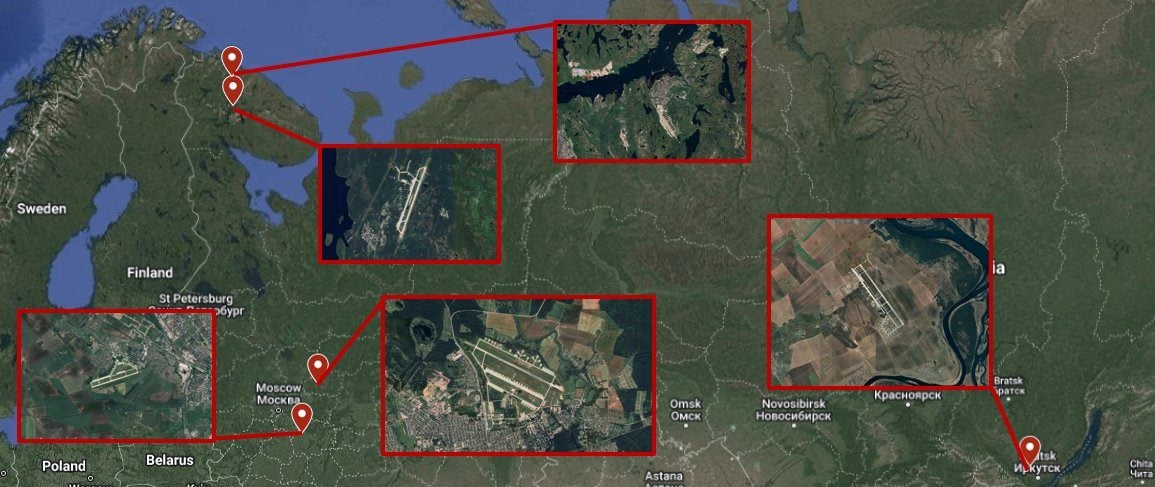Ukraine’s Security Service (SBU) has launched its most audacious military campaign yet, targeting five major Russian air bases in a covert operation codenamed “Web.” The long-range drone strikes, which reached as far as 4,000 kilometers into Russian territory, struck Olenya Air Base in the Murmansk Region, Belaya Air Base in Irkutsk, Ivanovo Air Base, Dyagilevo Air Base in Ryazan, and Severomorsk—the administrative center of the Russian Northern Fleet.
The operation reportedly destroyed at least 41 aircraft, including Tu-95 and Tu-22M3 strategic bombers—assets Russia has used extensively to carry out missile attacks on Ukrainian infrastructure. Particularly devastating was the strike on Belaya Air Base, where local reports described extensive damage and smoke visible from miles away. Severomorsk, a vital naval and aerial logistics hub in the Arctic region, was also hit, endangering its missile depot that supports both strategic bombers and the Northern Fleet.
Sources suggest the drones were remotely operated, but the logistics of such long-range operations raise speculation about possible internal coordination within Russian territory. While some observers have raised questions about the use of artificial intelligence in guiding the UAVs, current intelligence indicates that human operators were involved in the precision strikes.
This large-scale operation builds on Ukraine’s increasingly assertive drone strategy. Just days earlier, on May 28, Ukrainian drones targeted the Raduga Design Bureau near Moscow, a key facility for cruise missile production. That strike had been regarded as Kyiv’s most significant drone operation until the launch of “Web.”
The scale and precision of the new strikes suggest a breakthrough in Ukraine’s drone warfare capabilities. Ukrainian President Volodymyr Zelenskyy’s pledge to produce one million FPV drones in 2024 is showing results, as these weapons enable deep-strike capability that can reach Russia’s strategic assets well beyond the frontlines.
Official Russian responses have remained limited. The governor of Irkutsk Region acknowledged a Ukrainian drone attack on a military unit in the village of Sridni, marking the first recorded strike in Siberia. However, Moscow has yet to fully address the apparent scale of damage, particularly the loss of strategic bombers and munitions stockpiles.
The targeting of Severomorsk has drawn particular attention due to its critical role as headquarters of the Northern Fleet, which includes advanced fighter regiments such as the MiG-29K and Su-33. Analysts say the successful targeting of this base could hinder Russia’s Arctic and naval operations, while forcing the Kremlin to reconsider the safety of assets once believed to be out of Ukraine’s reach.
As the war evolves, Ukraine’s growing technological edge and daring tactics are reshaping the battlefield. By striking deep into Russian territory, Kyiv aims not just to degrade enemy capabilities but also to demonstrate that distance is no longer a barrier. The international community continues to monitor these developments, as the balance of military momentum shifts under the weight of drone warfare and strategic precision.













